The old idea that buying airline tickets on a certain day, usually Tuesday, gets you the best deal is something a lot of travelers still believe. But after looking closely at today’s airfare data, it turns out this is mostly outdated.
What really matters now is the booking window. That is, how far in advance you buy your ticket before your flight. Because airline pricing is so complex and changes constantly, the exact day you buy doesn’t make much difference anymore.
So, if you’re trying to save money, it’s more about when you book, not the specific day of the week.
Contents
- 1 The “Cheap Tuesday” Myth Busted
- 2 Finding the “Booking Sweet Spot”
- 3 Quick Guide to the Best Booking Windows
- 4 The Traveler’s Calendar: Tailoring Your Booking by Season and Destination
- 5 The Midweek Advantage: Why When You Fly Matters More Than When You Book
- 6 The Layover Trade-Off: Saving Money by Adding Stops
- 7 How Airline Prices Really Work
- 8 Mastering Google Flights: The Practical Traveler’s Toolkit
- 9 Final Takeaways
The “Cheap Tuesday” Myth Busted

After analyzing four years of Google Flights data, it’s clear that booking on a specific day of the week doesn’t really save you much.
While flights booked on Tuesdays have been, on average, just a tiny bit cheaper than other days, the difference is minimal, only about 1.3% cheaper than Sunday, which happens to be the most expensive day to book.
For most travelers, that small saving isn’t worth planning your purchase around a particular day. And travel experts agree: the idea of a “Cheap Tuesday” is mostly a myth now. It probably came from the days when airlines updated fares manually once a week, usually early in the week, which led to short windows of price changes as competitors responded.
Today’s airline prices are always shifting thanks to complex algorithms that adjust fares constantly based on demand, competition, and other factors. There’s no longer a set weekly schedule for price updates, so trying to find a single “best day to buy” just doesn’t work anymore.
Finding the “Booking Sweet Spot”
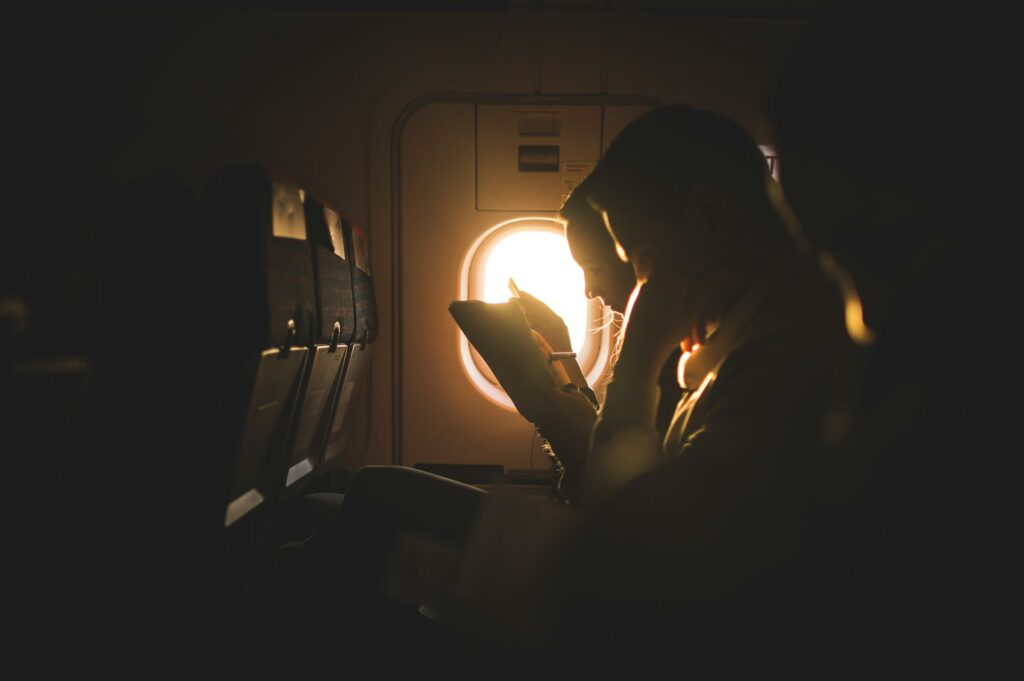
Instead of worrying about what day of the week to book, the real key to getting the best airfare is when you book, or how far ahead of your trip you buy your ticket.
The data shows clear patterns for an ideal booking window, or a “sweet spot,” where prices tend to be the lowest. Focusing on this timing can save you way more than just booking on a Tuesday.
For domestic flights in the U.S., prices are usually lowest if you book between 23 and 51 days before your trip, with the sweet spot right around 39 days out. Booking during this three-to-seven-week window means you’re grabbing tickets after initial fares are set but before prices jump as the flight fills up.
For international flights starting in the U.S., the best prices generally show up 49 days or more before departure. Unlike domestic flights, prices don’t usually drop closer to the date; they tend to rise steadily, especially in the last 50 days.
This is even more true for long-haul flights, where booking as early as possible is your best bet. Because international trips involve longer planning and higher demand, airlines price early and reward travelers who commit well in advance.
Quick Guide to the Best Booking Windows
To sum up the key points, here’s a simple table showing the best times to book different types of trips, based on Google Flights data.
Trip Type
Optimal Booking Day (Before Departure)
Ideal Booking Range (Before Departure)
General Domestic
39 days
23-51 days
General International
49+ days
49+ days
Thanksgiving (Domestic)
35 days
24-59 days
Christmas (Domestic)
51 days
32-73 days
Spring Break (Domestic)
43 days
28-61 days
Summer Vacation (Domestic)
21 days
14-43 days
Flights to Europe
48+ days
48+ days
Flights to Mexico/Caribbean
50 days
26-79 days
Looking deeper, the main rule behind these booking windows is this: how predictable the demand is shapes when it’s best to buy tickets.

For trips with fixed dates and high demand, like international flights or big holidays such as Christmas, you need to book well in advance. Airlines expect lots of people to travel during these times, so they reward early bookers and charge more for last-minute purchases.
For example, Christmas travel booking windows open as early as 73 days before departure, reflecting how far ahead people plan.
On the other hand, trips with more flexible or spread-out demand, like summer travel within the U.S., let you book closer to your flight. The sweet spot for summer bookings is about 21 days before departure, with some room as close as 14 days out.
Since summer travel plans tend to be more flexible and demand is spread across several months, airlines might drop prices closer to the date to fill seats on less popular flights or dates.
In short, the “sweet spot” for booking depends on how travelers behave overall. Knowing this helps you plan better, book early for fixed, popular trips, and wait a bit when your plans are flexible.
The Traveler’s Calendar: Tailoring Your Booking by Season and Destination
While knowing the general booking windows is a great start, getting the most savings means digging a little deeper. Look at how different seasons and destinations affect those windows. Travel demand spikes around holidays and popular vacation times, which can shift the best times to book.

Holidays are some of the busiest and priciest times to fly because dates are set and demand is sky-high. The best way to get a good deal is to book early, well before most travelers, by hitting the right booking windows based on past data.
For Thanksgiving, the sweet spot for booking domestic flights is between 24 and 59 days ahead, with the lowest prices usually showing up around 35 days before the holiday. That means buying your tickets in late September or early October is your best bet to avoid the price spikes that happen closer to Thanksgiving.
For Christmas and New Year’s travel, you need to plan even earlier. The ideal window is between 32 and 73 days before your trip, with the best deals about 51 days out. So, mid-October through mid-November is when you should book to get the best prices.
Planning for Vacation Seasons

Vacation times like Spring Break and summer see a lot of travelers, but because the demand is different for each, the best booking strategies change too.
For Spring Break trips in March and April, it’s smart to book between 28 and 61 days before your trip. The lowest prices usually pop up about 43 days out. Demand during Spring Break is high but focused on just a few weeks, making it a bit like booking for a holiday—just a little less intense.
Summer vacations in July and August work differently. If your plans are flexible, you can wait a bit longer to book. The best time to buy is closer to your trip—between 14 and 43 days ahead—with the sweet spot around 21 days before departure.
Because summer travel is spread over a few months, airlines have more room to adjust prices and often offer better last-minute deals for those who aren’t locked into exact dates.
Destination-Specific Booking Tips
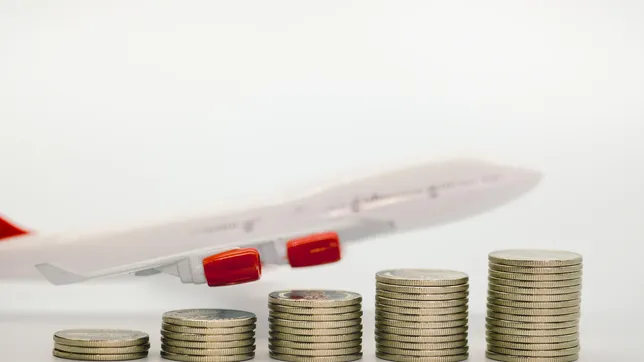
While the general rules for international travel are helpful, each destination has its own quirks that can help you save more if you know what to look for.
For trips from the U.S. to Europe, the advice is pretty much the same as for most long-haul international flights: book 48 days or more in advance. Prices usually don’t drop closer to the departure date; they just go up.
But traveling from the U.S. to Mexico or the Caribbean is a different story. Here, there’s a clear “sweet spot” for booking: between 26 and 79 days before your trip, with the best prices around 50 days out. This is a notable exception to the usual “book as early as possible” rule for international travel.
Why the difference? These routes are mostly for leisure travelers, who care a lot about price, unlike the business travelers on many European flights. Plus, there are many budget and low-cost airlines competing on these routes, which drives prices down.
Airlines here use dynamic pricing to manage demand. They might lower fares during that 26- to 79-day window to fill seats, then raise prices again closer to the trip for last-minute bookings. That means booking too early on these routes can actually cost you more.
So, your booking strategy should change depending on your destination. There’s no one-size-fits-all when it comes to international travel, so it pays to know the unique market for where you’re going.
The Midweek Advantage: Why When You Fly Matters More Than When You Book
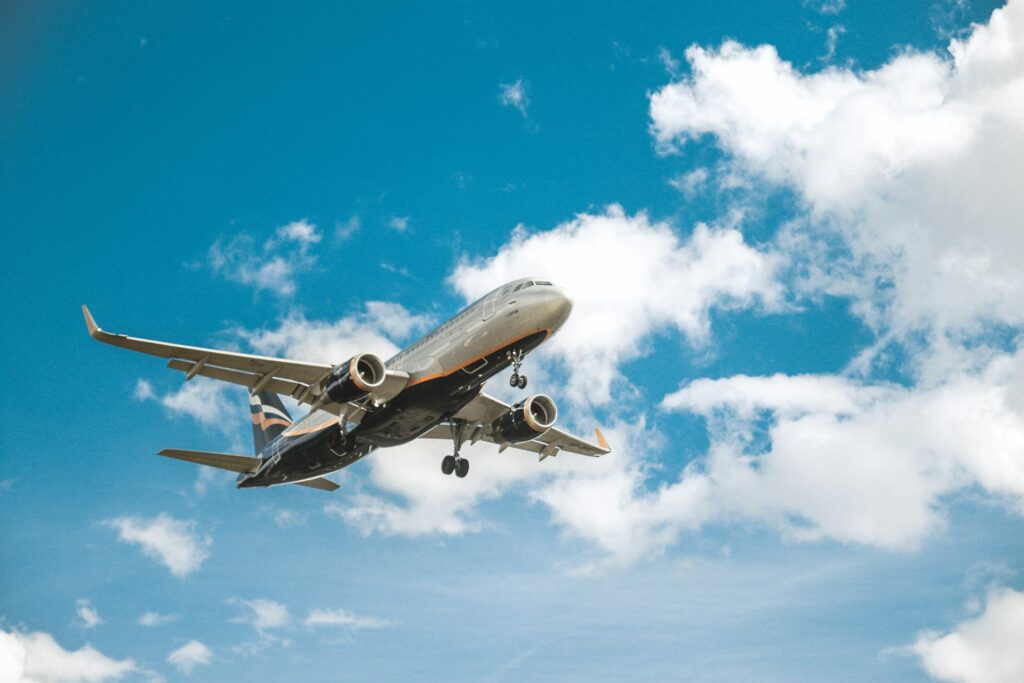
Google Flights data makes it clear. On average, flying on a Monday, Tuesday, or Wednesday is about 13% cheaper than flying on the weekend (Friday through Sunday).
Across the travel industry, Tuesday and Wednesday consistently rank as the cheapest days to be in the air. Why? Simple, there’s less demand. Fewer people are flying midweek, so airlines lower prices to fill seats.
On the flip side, Sunday is usually the most expensive day to fly. That’s when vacationers are heading home and business travelers are gearing up for the week, driving up demand and prices.
Airlines don’t price tickets based on the cost of operating the flight, but based on how many people want those seats. That demand follows a weekly rhythm, shaped by two big traveler groups: leisure and business.
Leisure travelers usually fly out on Fridays to make the most of their weekends, and return home on Sundays—creating a huge spike in demand at the end of the week. As a result, airlines charge more for those popular days.
Business travelers, on the other hand, tend to fly out on Monday mornings and return late Thursday or Friday. Their trips are built around the traditional workweek, and their schedules aren’t very flexible, so they also pay a premium.
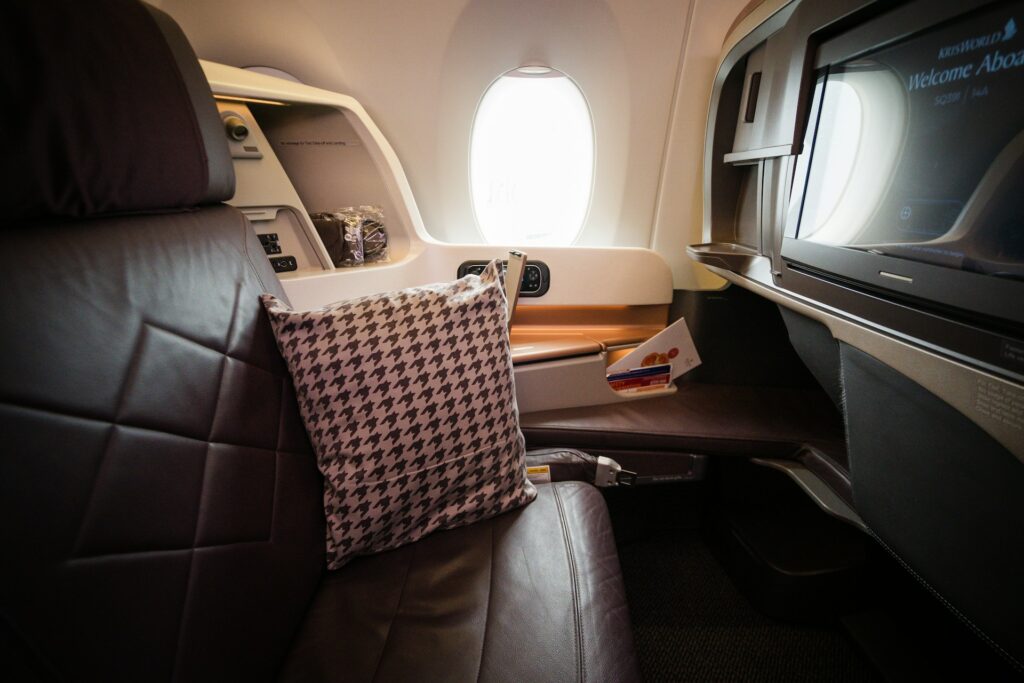
This leaves Tuesdays and Wednesdays as a quiet spot in the middle of the week. With most business travelers already on the ground and weekend flyers still at home, demand drops.
Rather than flying half-empty planes, airlines drop prices to attract flexible travelers, like remote workers, retirees, or vacationers with wiggle room in their plans.
In a way, this midweek lull is a pricing loophole. If you can be flexible, you’re cashing in on a market inefficiency. Flexibility becomes its own form of currency.
Also Read: This Genius Google Trick Travelers Are Using to Find Crazy Cheap Flight Deals Before Anyone Else
The Layover Trade-Off: Saving Money by Adding Stops
Beyond when you book or when you fly, one of the biggest ways to save on airfare is choosing a flight with a layover instead of going nonstop.

How Much Can You Actually Save?
The savings are real, and significant. Google Flights data shows that choosing a connecting flight instead of a nonstop one can save you around 22% on average. Other industry sources put the range between 20–30%, especially on long-haul or family trips. That can easily add up to hundreds, even thousands, in savings.
Why Nonstop Flights Cost More
Airlines treat nonstop flights as a premium option. It’s not that they cost more to operate; it’s that people are willing to pay more for them.
Business travelers and anyone short on time often prefer to skip the hassle of layovers, so airlines price direct routes higher because they know demand is strong and consistent. On the other hand, flights with layovers are priced lower to appeal to more price-sensitive travelers.
Behind the Scenes: The Hub-and-Spoke System
Most airlines run on what’s called a hub-and-spoke system. Instead of flying directly between every city pair, they route travelers through central hub airports (like Atlanta for Delta or Dallas for American).
If you’re flying from a smaller city, like Boise, to a major destination like Paris, you’re probably going through a hub anyway. Airlines rely on these connections to fill seats on both legs of the trip.
So, when you book a flight with a layover, you’re helping them make the system work, and they reward you with a lower price.
But Don’t Forget the Hidden Costs
Layovers can save you money on the ticket. But they can cost you in other ways.
- A long layover might mean airport meals, pricey Wi-Fi, or buying extra snacks.
- An overnight layover could mean booking a hotel.
- A short layover increases your risk of missing a connection, especially if the first flight is delayed.
So, always weigh the total cost and risk of a layover, not just the ticket price.
What You’re Really Buying

A layover flight isn’t just a cheaper version of a nonstop, it’s a different product altogether.
A direct flight from New York to London is one high-demand route. But a connecting flight from New York to Reykjavik, then Reykjavik to London, is really two lower-demand routes packaged together. By selling that combo at a lower price, the airline fills more seats across its network.
So the real decision isn’t just “direct or not?” It’s:
- Do you want the convenience of a premium product?
- Or are you okay trading a bit of time and comfort for a better price?
If you’re flexible, a layover can be one of the smartest ways to stretch your travel budget.
How Airline Prices Really Work

Airfare prices can feel unpredictable—rising one moment, dropping the next. But behind the chaos is a highly engineered system: dynamic pricing. This is the real engine behind every ticket price you see.
It’s not random, and it’s not based on cost-plus pricing. It’s an algorithmically optimized offer, designed to get as much revenue as possible from every seat on every flight.
What Is Dynamic Pricing?
Dynamic pricing means prices aren’t fixed. They constantly shift in response to demand, competition, inventory, and behavior. For airlines, the goal is clear:
Sell the right seat, to the right person, at the highest price they’re likely to pay.
This is all powered by AI and machine learning, analyzing everything from booking trends to holiday schedules to what time of day you search.
Key Factors That Change Airfare Prices
1. Real-Time Demand and Seat Inventory
Planes are divided into pricing “buckets” (Y, M, B, H, etc.).
- The cheapest seats are released first.
- As they sell, the algorithm locks them and moves up to the next (more expensive) tier.
- That’s why prices go up as the flight fills or departure nears.
2. When You Book (a.k.a. the Booking Window)
- Early buyers are usually leisure travelers—more price-sensitive.
- Last-minute buyers are often business travelers—less price-sensitive.
The algorithm charges each group accordingly.
3. Competitor Pricing
Airlines constantly monitor rival fares. If one airline drops its price on a route, others often follow automatically.
4. Seasonal and Event-Based Demand
The system knows when demand will spike, like Spring Break, Thanksgiving, or the Super Bowl. Prices go up well before the surge hits. No surprise deals here.
5. Search Behavior and Customer Type
- If you search for a Monday–Friday trip, the system might tag you as a business traveler and quote a higher fare.
- If you repeatedly search the same dates, it might detect high interest and (in some cases) bump the price.
- One-way searches, short lead times, or no flexibility can also trigger higher prices.
What This Means for You
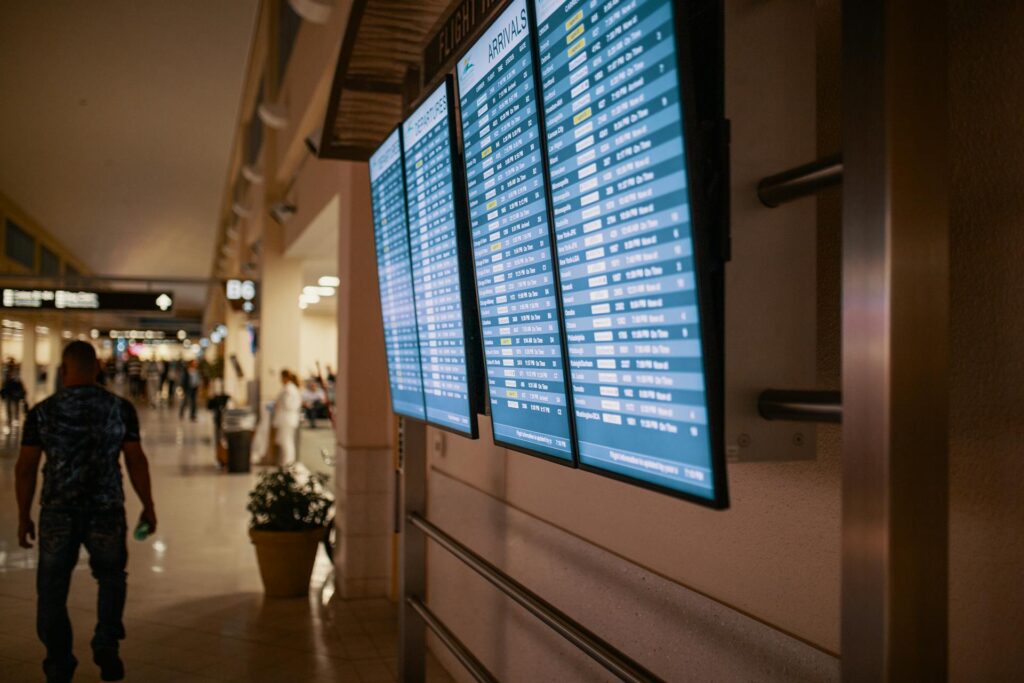
A plane ticket doesn’t have a single “cost.” It has a shifting market value, tailored to the moment and the traveler.
As mentioned earlier, airlines don’t need to fill planes at one price. They aim to fill seats at many prices, each one targeting a different segment of travelers.
With high fixed costs and almost no marginal cost (an extra passenger adds little expense), even a small fare is better than an empty seat.
How to Use This to Your Advantage
If prices are fluid, then strategy matters. Here’s how to work with the system:
- Book early, especially for international or holiday travel.
- Be flexible with travel dates, airports, and even trip length.
- Avoid repeat searches on the same device (use incognito or different browsers, though this impact is debated).
- Compare one-way vs. round-trip options; sometimes two one-way tickets are cheaper.
- Monitor trends. Set alerts and watch how prices behave over time.
Mastering Google Flights: The Practical Traveler’s Toolkit
Knowing how airfare pricing works is one thing; saving real money on your next trip is another. That’s where Google Flights comes in. It’s a powerful set of tools that turns your knowledge of booking windows, flexible dates, and dynamic pricing into actionable savings.
The key principle is to be flexible, and let the tools do the heavy lifting.

If you’re open to shifting your dates or even your destination, Google Flights will show you exactly where the deals are. Here’s how to make the most of it:
Tool #1: Price Tracking Alerts
What it does:
Automatically tracks airfare for a specific route or set of dates and notifies you when prices change.
How to use it:
- Search for a flight.
- Toggle the “Track prices” switch.
- Choose to track exact dates or select “Any dates” to monitor general trends.
Strategy:
This is perfect for applying what you know about booking windows.
Let’s say you’re flying domestically and want to book about 39 days out, set a price alert months in advance. When the fare dips into the sweet spot, Google emails you. No more checking prices daily.
Tool #2: Date Grid & Price Graph
What they do:
- Show you how airfare changes when you shift departure or return dates.
- Date Grid = calendar-style grid of fares.
- Price Graph = bar chart of fares over time.
How to use them:
- Search for a destination.
- Click the date field to open the Date Grid. Cheapest combos are in green.
- Tap “Price graph” to view long-term trends.
Strategy:
Use this to exploit the Midweek Advantage.
Example: You’re planning a round-trip. The grid shows flying out Tuesday and back Wednesday is $120 cheaper than a weekend combo. Suddenly, shifting your schedule saves you real money, and it’s all visible at a glance.
Tool #3: Explore Map
What it does:
Helps you find cheap destinations from your home airport, even if you don’t have a set plan.
How to use it:
- Go to the “Explore” tab.
- Leave the destination blank.
- Enter dates or flexible filters like “a weekend in November.”
- Zoom and scroll to browse destinations and their prices.
Strategy:
This flips the usual planning model. Instead of picking a destination first, find a deal and let price choose your next adventure. Ideal for budget travelers, spontaneous getaways, or anyone craving travel without a fixed itinerary.
Tool #4: Price Guarantee Badge
What it does:
Locks in the lowest fare with a refund guarantee. Only available on select U.S. departures.
How it works:
- Look for the Price Guarantee badge (a colorful shield).
- If the fare drops by more than $5 after you book, Google refunds you the difference via Google Pay.
- Refunds are capped at $500/year, max 3 bookings.
Strategy:
This tool removes the fear of buying too soon.
If you find a flight inside the right booking window and it has this badge, you can book confidently, knowing you’ll get money back if the price drops later. It’s essentially insurance against overpaying.
Final Takeaways
Finding cheap airfare isn’t about tricks or luck. It’s about strategy. The best deals come not from aligning your search with three powerful principles: timing, flexibility, and itinerary choice.
Understand the game, use the tools, and let the data guide your next booking. That’s how you stop chasing cheap flights and start finding them.